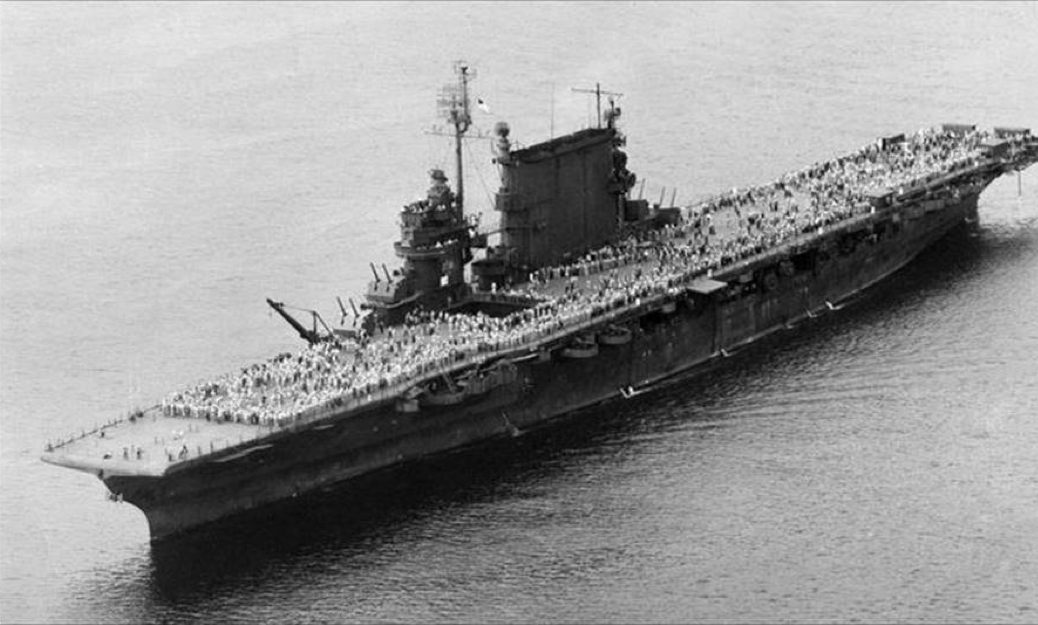USS Lexington – Ship of the Week April 20, 2017 | West Pacific Marine
We normally do not cover ships lying on the seabed, particularly one that has been there for 76 years, but this week we are making an exception for an exceptional vessel. Early last month the wreckage of USS Lexington was discovered by an expedition crew aboard Paul Allen’s RV Petrel. The Lexington was discovered 3,000 meters below the surface approximately 500 miles off the eastern coast of Australia. She was mortally damaged by Japanese torpedo bombers, launched from aircraft carriers, on May 8 1942 during the Battle of the Coral Sea. She was abandoned and scuttled with the loss of more than 200 crew.
Built by Fore River Ship and Engine Building Co., Quincy Massachusetts
Ordered in 1916 as a battle cruiser – design amended in 1922 to an aircraft carrier
Launched in 1925 and commissioned in 1927
LOA 270.7m
Beam 32.8m
Propulsion quadruple screw turbo electric 180,000 shp (130,000 kW)
Speed 33 knots
Crew 2,800 including air-arm
Aircraft 78
Sister ship USS Saratoga

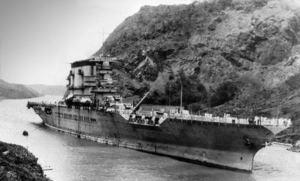
Lady Lex, also known as Gray Lady was the fourth U.S. naval vessel to be named Lexington after the 1775 Battle of Lexington during the American War of Independence. Originally designed as a battlecruiser, she was converted during construction into one of the U.S. Navy’s first aircraft carriers in order to comply with the Washington Naval Treaty which essentially eliminated all new battlecruiser and battleship construction. Following transit of the Panama Canal, picture above right) she was assigned to the U.S. Pacific Fleet for her entire career. USS Lexington, three heavy cruisers and five destroyers were ordered to depart Pearl Harbor on 5 December 1941 to ferry marine dive bombers in support of the U.S. base at Midway Island. On the morning of 7 December, the Task Force was about 500 nautical miles southeast of Midway when it received news of the Japanese attack on their Pearl Harbour base. In the Battle of the Coral Sea in May 1942, over the course of four days USS Lexington and the carrier USS Yorktown battled with a Japanese carrier fleet threatening New Guinea and Australia. It was recorded as the first naval battle in history fought by aircraft and with the opposing ships never actually laying eyes on each other.
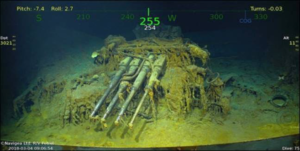
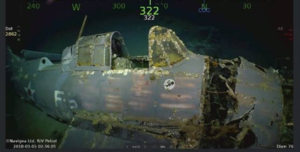
The 76m RV Petrel (pictures below) carries subsea equipment capable of diving to depths of up to 6,000 meters. The search team was helped in this case by accurate accounts of where the Lexington went down but ultimately high powered sensors on a remote controlled vehicle led them to the location of the wreckage. Highlights included the ship’s name still clearly visible on the hull, anti-aircraft guns, the shells of fighter and bomber aircraft and even a loose torpedo lying on the seabed.

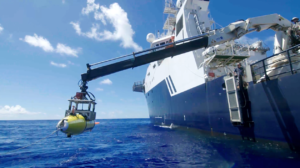
In recent years, Paul Allen led expeditions have found the wreck of the Japanese battleship Musahi, and that of the destroyer USS Ward, both off the coast of the Philippines. The Ward is best known for firing the first American shot in World War II when it attacked a Japanese midget submarine near Pearl Harbor early on the “Day of Infamy” December 7, 1941. The Battle of the Coral Sea was a tactical victory for Japan in terms of vessels lost on each side but the battle proved to be a strategic victory for the U.S; notably as the first checking of a Japanese advance since the outset of World War II. The heavily damaged Japanese aircraft carriers Shōkaku and Zuikaku were unable to participate in the Battle of Midway the following month when the U.S. secured a decisive victory and which ultimately proved to be a turning point in the course of the war.
See the short video https://www.youtube.com/watch?v=f3s_RPLnnmw
Ship of the Week contributed by Capt. Stephen Brown, West Pacific Marine Ltd. www.westpacificmarine.ca

